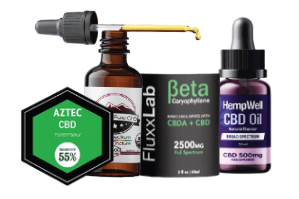
When selecting materials for tincture bottle labels, businesses must carefully consider several factors that influence the overall appearance, durability, and functionality of the product. Moreover, choosing the right materials plays a crucial role in branding, as well as increasing consumer appeal. Well-designed tag that complements it creates a strong first impression and attracts attention. Additionally, it ensures that essential information, such as product details, usage instructions, and brand elements, remains clear and legible. This article explores the key factors to consider when selecting the ideal material for Tincture Bottle Labels, focusing on aspects like durability, aesthetics, and practicality to ensure an impact on customers and stand out in the market.
Importance of Materials for Tincture Bottle Labels
Materials for tincture bottle labels significantly impact the appearance and performance of the product. Moreover, the first thing customers notice is the label, that provides vital information and conveys the quality of the product. For example, options that resist water and oils are ideal for them, as these products often come into contact with liquids during use. High-quality materials can increase the overall aesthetic appeal of the product while providing clarity and visibility of the text. Therefore, companies must assess the environment in that the product will be used and choose options that align with their branding and the practicality of the product.
“Good packaging protects your product; great packaging projects your story.”
Types of Label Materials
Types of label materials can be used for tincture bottles, depending on the brand’s specific needs. Moreover, each material offers distinct advantages in terms of appearance, durability, and cost. Common options include:
- Paper: Lightweight and easy to print on, suitable for short-term use.
- Vinyl: Flexible, resistant to tears, and provides excellent durability for long-term use.
- Polypropylene: Ideal for outdoor use, offering resistance to moisture and chemicals.
Choosing the right material ensures the label can withstand exposure to moisture, oils, and other substances commonly found in the environment.
Advantages of Different Materials for Tincture Bottle Labels
Each material used for tincture labels comes with its own set of benefits. Moreover, different options offer distinct advantages based on the brand’s specific requirements, such as aesthetic preferences, cost, and durability. Some solutions may offer a premium look, while others prioritize practicality.
Durability: Materials like polyester and vinyl offer good performance, especially in harsh environments.
Water Resistance: Some solutions, such as polypropylene, are resistant to moisture, that makes them ideal for those that are frequently handled.
Print Quality: High-quality options support clear printing, ensuring legible information and vibrant colors.
Environmental Impact: Eco-friendly options are gaining popularity, as they are biodegradable and recyclable.
These factors contribute to making an informed decision about the best materials for tincture bottle labels.
Consider the Factors When Selecting Label Materials
Several factors influence the decision when selecting the appropriate material for tincture bottle labels. Moreover, consider the following when making your choice:
Product Use: If it will be exposed to moisture, oils, or rough handling, choose durable, water-resistant materials like polyester or vinyl.
Brand Image: The material chosen should reflect the quality and luxury of the brand, such as using matte or glossy finishes for a premium look.
Environmental Considerations: Brands focused on sustainability may prefer eco-friendly materials like recyclable paper or biodegradable plastics.
Cost and Quantity: Evaluate the material’s cost and how it aligns with the budget, especially if producing large quantities.
These elements will help narrow down the material options and ensure the tincture bottle label performs well and represents the brand effectively.
Features of Good Tincture Bottle Labels
For a tag to be effective, certain features should be prioritized. These features are essential for the overall function and customer experience. Moreover, consider the following when designing a tincture bottle tag:
- Clarity: Labels should be easy to read, with bold fonts and legible text.
- Durability: Choose materials that withstand wear and tear, especially if the product will be exposed to frequent handling.
- Moisture Resistance: Tags that resist water, oils, and spills are crucial for maintaining clarity and ensuring longevity.
- Adhesion: Ensure the tag adheres well to the bottle, even in humid or wet conditions.
Good labels reflect the care and attention to detail a brand provides its customers, making them an essential part of the product’s appeal.
Packaging and Materials for Tincture Bottle Labels
Businesses looking for customized solutions should consult with professionals who understand the importance of label materials. Moreover, many Packaging Companies In Canada specialize in creating high-quality, durable tags suited for tincture bottles. These experts can guide businesses in selecting the most appropriate options based on the brand’s goals and product specifications.
Conclusion
Choosing the right materials for tincture bottle labels involves balancing several key factors, including durability, appearance, and functionality. Whether prioritizing eco-friendliness, print quality, or moisture resistance, the right tag can help a tincture bottle stand out and create a memorable brand image. Moreover, materials like vinyl and polyester offer excellent durability, while paper and polypropylene can provide a more cost-effective solution. By understanding the characteristics of each material and considering the specific needs of the product, businesses can make informed decisions that lead to excellent and functional labels. Additionally, the right material will help your brand make an impact on customers, making it an essential part of your marketing strategy.